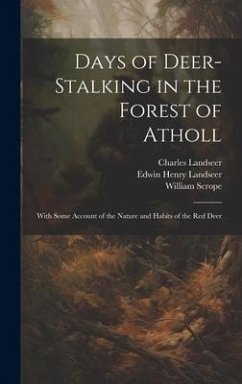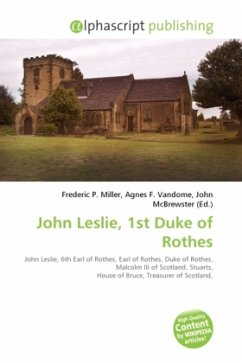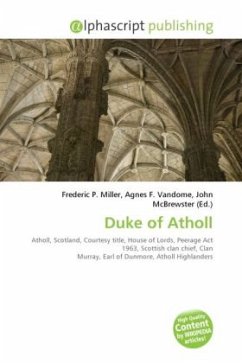
Duke of Atholl
Versandkostenfrei!
Versandfertig in 6-10 Tagen
23,99 €
inkl. MwSt.

PAYBACK Punkte
12 °P sammeln!
High Quality Content by WIKIPEDIA articles! The title Duke of Atholl, named after Atholl in Scotland, was created only one time in British history by Queen Anne in 1703, for John Murray, 2nd Marquess of Atholl with a special remainder failing his heirs male to those of his father the 1st Marquess. The present Duke holds numerous subsidiary titles. These include: Marquess of Atholl (created 1676), Marquess of Tullibardine (1703), Earl of Atholl (1629), Earl of Tullibardine (1629 and 1676), Earl of Strathtay and Strathardle (1703), Viscount of Balquhidder (1676), Lord Murray of Tullibardine (160...
High Quality Content by WIKIPEDIA articles! The title Duke of Atholl, named after Atholl in Scotland, was created only one time in British history by Queen Anne in 1703, for John Murray, 2nd Marquess of Atholl with a special remainder failing his heirs male to those of his father the 1st Marquess. The present Duke holds numerous subsidiary titles. These include: Marquess of Atholl (created 1676), Marquess of Tullibardine (1703), Earl of Atholl (1629), Earl of Tullibardine (1629 and 1676), Earl of Strathtay and Strathardle (1703), Viscount of Balquhidder (1676), Lord Murray of Tullibardine (1604), and Lord Murray, Balvenie and Gask (1676). All of the titles belong in the peerage of Scotland. The Duke's eldest son and heir has the courtesy title of Marquess of Tullibardine. Between 1846 and 1957 the Duke was also Baron Glenlyon in the United Kingdom, enabling him to sit in the House of Lords. On this barony's extinction in 1957, the Duke of Atholl had the dubious honour of being the highest ranking peer without a seat in the House of Lords until the Peerage Act 1963 (when all hereditary Scottish peers gained the right to sit in that body).





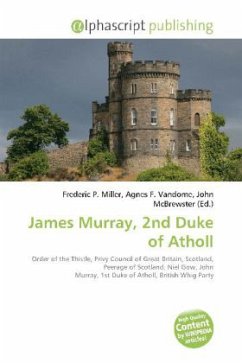
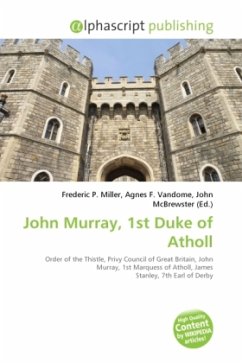

![Harry Disney, Ed. [Really Written By] Atholl De Walden Cover Harry Disney, Ed. [Really Written By] Atholl De Walden](https://bilder.buecher.de/produkte/66/66074/66074308n.jpg)
